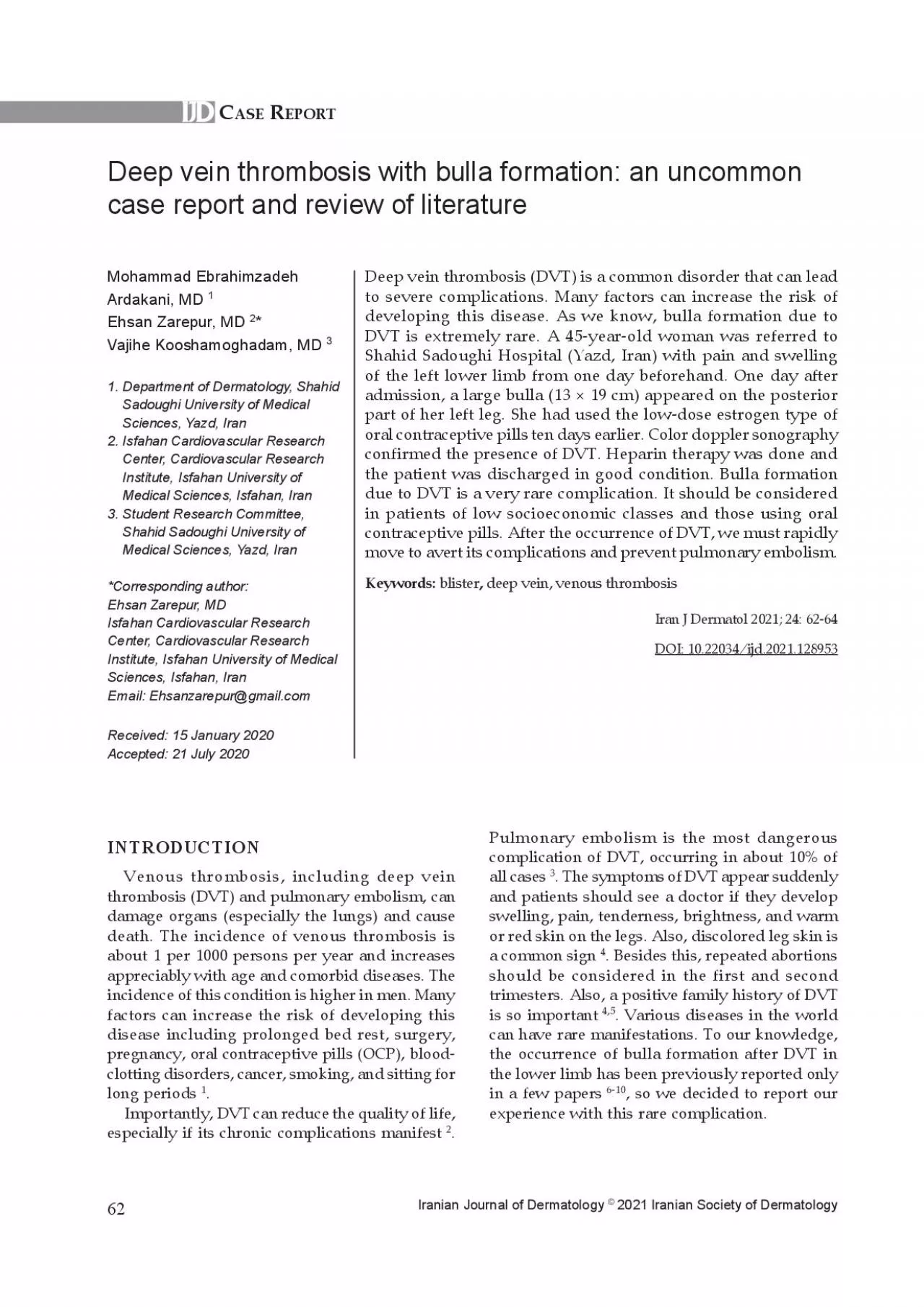PDF-Iranian Journal of Dermatology 2021 Iranian Society of DermatologyDe
Author : luna | Published Date : 2022-08-20
62C DOI 1022034ijd2021128953Received 15 January 2020 Accepted 21 July 2020 Iranian Journal of Dermatology Vol 24 No 1 March 2021CASE PRESENTATIONA 45yearold woman
Presentation Embed Code
Download Presentation
Download Presentation The PPT/PDF document "Iranian Journal of Dermatology 2021 Ira..." is the property of its rightful owner. Permission is granted to download and print the materials on this website for personal, non-commercial use only, and to display it on your personal computer provided you do not modify the materials and that you retain all copyright notices contained in the materials. By downloading content from our website, you accept the terms of this agreement.
Iranian Journal of Dermatology 2021 Iranian Society of DermatologyDe: Transcript
Download Rules Of Document
"Iranian Journal of Dermatology 2021 Iranian Society of DermatologyDe"The content belongs to its owner. You may download and print it for personal use, without modification, and keep all copyright notices. By downloading, you agree to these terms.
Related Documents














